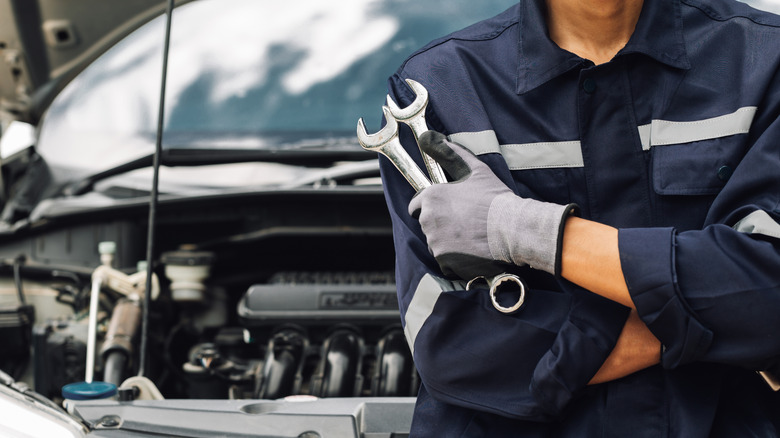Electric vehicles (EVs) are becoming a staple of modern living, especially for those of us looking to avoid the gas station. But beyond the heftier upfront cost at the dealership, drivers are also concerned with the long-term costs of operating an EV car or truck. At the end of the day, one of the biggest concerns is whether it’s more expensive to repair an EV vehicle or an internal combustion engine (ICE) car or truck.
Generally speaking, EV vehicles do end up costing more to repair, but because there are so many fewer moving parts (e.g., no engine, spark plugs, or other ICE peripherals), you’ll probably end up at repair shops less often than you would with an ICE vehicle. Reports also indicate that most EV drivers have less maintenance costs to contend with over the first few years of ownership.
That said, the repair dialogue isn’t quite that simple: EVs may require less for maintenance costs like oil changes and ICE-related repairs, but if your EV battery fails prematurely (most should last eight to 10 years), you could be looking at tens of thousands of dollars to replace the battery.
Why ICE repairs are easier for most shops to handle
ICE cars and trucks are the O.G. mode of transportation, and it’s the technology most repair shops are going to have the most experience with. One of the downsides of ICE ownership is how frequently you’ll need to bring your vehicle in for regular maintenance. We’re talking oil changes, spark plugs, timing belts, etc., on top of whatever you’re spending at the gas pump.
As the vehicle takes on wear and tear, you may end up having to invest in larger repairs, which could be as small as a sensor replacement or as large as a complete transmission or engine replacement. According to Kelly Blue Book, the average cost to rebuild a traditional ICE transmission in 2025 can range from $2,900 to $7,100.
Now here’s the upside: The lion’s share of dealership and third-party service shops are going to be able to get their hands on just about any ICE part fairly quickly and for a decent price. That means less downtime for you, and potentially fewer labor hours for the repair team to service your vehicle.
When all is said and done, an ICE vehicle is going to need its regular check-ups and maintenance, which is something EV owners have to think about less. But when it comes to major repair costs and how long your vehicle will be operated on, ICE owners are usually in a better position.
Why EV vehicles are cheaper daily drivers, but expensive to repair
As mentioned, EV vehicles have way fewer moving parts than an ICE car or truck. And fewer parts to go wrong means less potential maintenance and repair costs. It’s when there’s a significant repair to deal with — such as a battery replacement, or the servicing of a specialized part — that the dollars quickly start adding up.
According to Cars.com, EV drivers should expect to pay between $5,000 to $20,000 to replace a battery that’s outside of warranty coverage. For more advanced repairs, there’s a chance it won’t be as easy even to find a shop or technician that’s certified to do the work. There’s also the fact that EV parts are harder to come by, which means you could be looking at extended downtime for your vehicle.
Still, it’s hard to beat the fuel efficiency a well-tuned EV car or truck is going to provide. There’s also the added benefit of charging your vehicle at home (if you own a PHEV model), which prevents you from having to seek out a public charge station when your car is low on battery power.
As technology and repair networks improve, the cost gap between ICE and EV ownership should start to narrow. As for right now, ICE vehicles remain the more predictable option of the two, thanks to wider part availability and technician familiarity. EV vehicles will cost less to operate on a daily basis, but if something goes wrong, it may cost a big chunk of change to fix.









